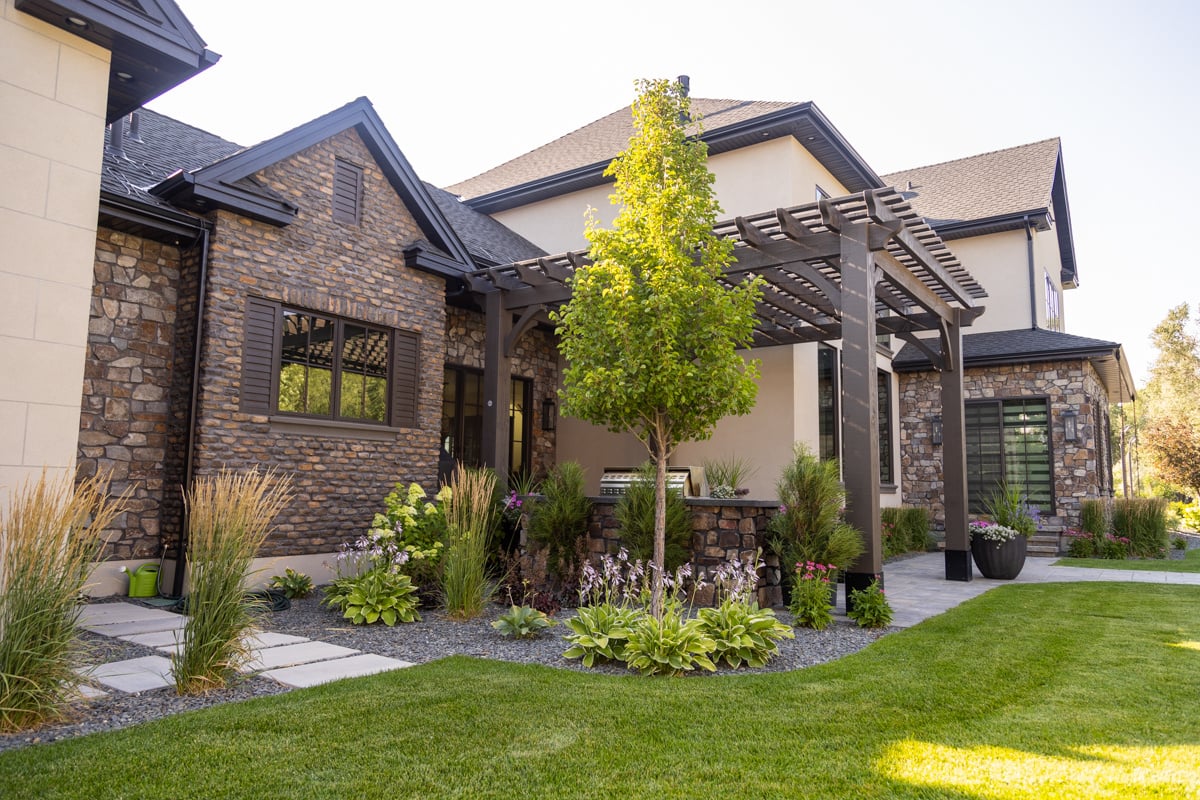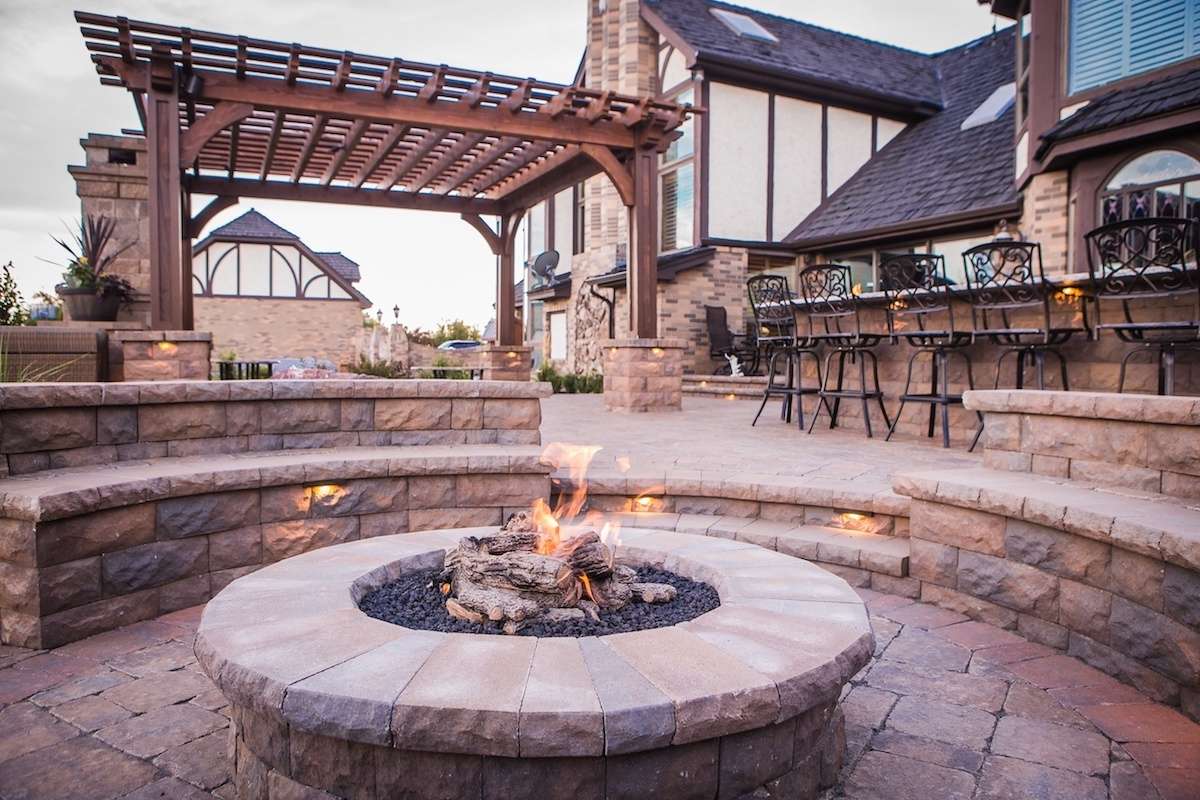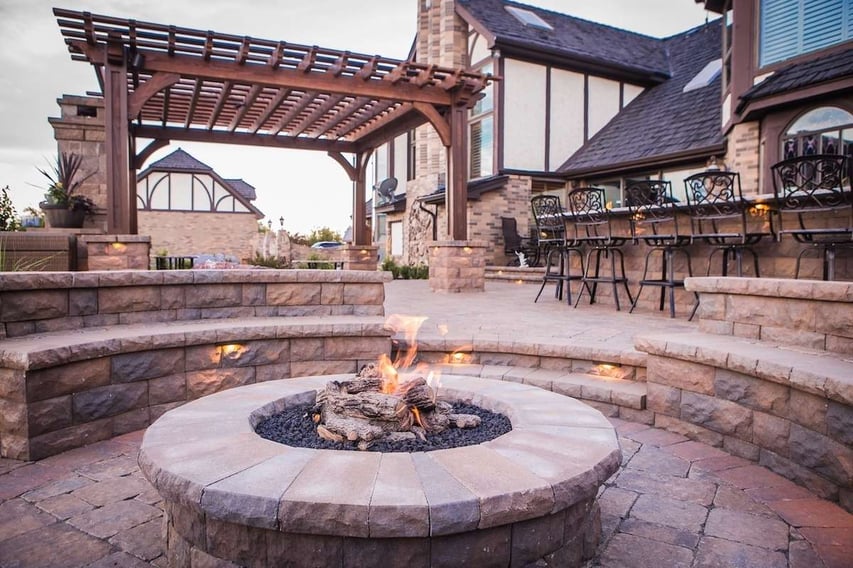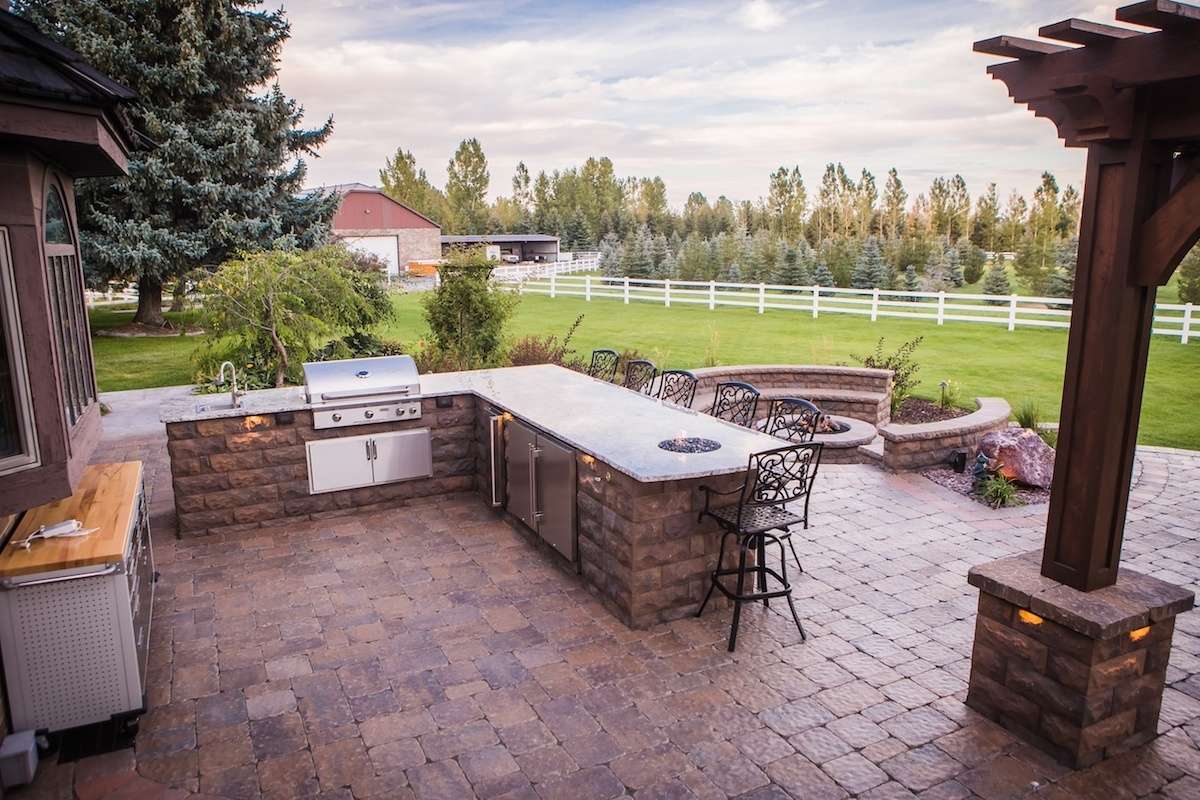

Backyard Fire Pit Design: Safe Sizing, Installation & Material Tips
Imagine the glow of a fire warming your face as you chat with friends on a crisp fall evening. Or, what about enjoying the taste of roasted marshmallows as you tell stories around the flames?
The ways you can enjoy your backyard fire pit are pretty endless — if you have the right design, fire pit size, location and construction from the start, that is.
So before you start imagining all of the ways your fire pit will enhance your outdoor space, here are some important things you better think about first.
This guide covers everything you need to know about planning your perfect backyard fire pit, from safety tips to choosing the best material, and how to find the right team for installation.
What Are Backyard Fire Pits—and How Much Do They Cost?
At its simplest, a fire pit is a container where you can safely make an outdoor fire. But that basic definition doesn’t show how much variety there really is.
Fire pits come in a few main types:
- In-ground fire pits
- Permanent above-ground fire pits
- Portable fire pits

A professionally installed backyard fire pit typically costs anywhere from a few hundred to several thousand dollars, depending on size, materials, and type. (By comparison, outdoor fireplaces range from $5,500 to $10,000.)
The beauty of a fire pit is its versatility — it creates a 360-degree view of the flames and becomes a natural focal point for gatherings.
Why Are Fire Pits So Popular in Idaho?
Fire pits are one of the most popular outdoor features in Idaho and in the Western US in general. That shouldn’t come as that big of a surprise considering our chilly temps during the fall and winter.
Plus, rustic outdoor features are especially popular in this area, and there are plenty of fire pit materials and types that will complete that rustic look.
A fire pit can also be constructed in less than a day — longer if you want additional features like a sitting wall, landscape lighting or other outdoor features.
But fire pits aren’t just trending here, this is a trend you’ll also see nationwide, especially in colder-weather areas.
Fire Pit Safety Guidelines for Your Backyard
You’ve heard the phrase “don’t play with fire,” right?
Fire pits are safe if you follow some basic guidelines:
- Keep at least 15 feet between the fire pit and any structures or combustibles
- Never place a fire pit on a wooden deck
- Avoid use during high winds
- Always keep a hose or extinguisher nearby
- Supervise children and pets at all times
- Keep the flame moderate—larger flames mean higher risks
- Never use gasoline to start a fire
Is It Legal to Have a Fire Pit in Idaho?
Yes — but make sure your design follows local fire safety codes. In Idaho Falls, that means at least 15 feet from any structures and proper use per manufacturer guidelines. Always double-check with your city’s fire department.
What Size Fire Pit Do I Need?
Besides thinking about the safety and legal aspects of owning a fire pit, you’ll probably also wonder what size fire pit you need and how deep should the fire pit should be.

If you choose a portable fire pit, the size will be predetermined. However, if you’re putting one in the ground or having it constructed, you’ll need to set the fire pit dimensions.
What to Consider When Choosing the Size of your Fire Pit:
- How many people do you want to be able to sit around it?
- Are you creating a more intimate space, or is it meant to entertain large groups?
- How big is your patio or landscape where you will add the fire pit?
Fire pit width (diameter):
- 3 feet wide = ideal for intimate settings
- 4–6 feet wide = best for groups of 4–6 people
- Add extra width for thick stone walls
Fire pit depth or height:
- In-ground fire pits: Just deep enough for a fire ring and wood (usually 6–12 inches)
- Above-ground fire pits:
- 12–14 inches high if you want to prop your feet up
- 18–20 inches high if doubling as seating
- Don’t exceed 20 inches or it becomes harder to enjoy the flames
In-Ground vs. Portable Fire Pits
When deciding between installing an in-ground fire pit or portable fire pit, think about the differences in the two and which fits your lifestyle best.
For a more permanent, out-of-sight feature, try an in-ground fire pit. These will give you that bonfire-type look and feel, and they could even be covered up if needed.
A portable fire pit gives you more versatility, which is great if you have trouble making decisions about exactly where you want the pit to go. Having a fire pit that is higher up will help the heat better reach you when you’re sitting or standing near it. A fire pit above ground will also help give your landscape a focal point and create visual interest.
| Feature | In-Ground | Portable |
|---|---|---|
| Look & Feel | Rustic, natural | Modern or casual |
| Cost | Usually higher | More affordable |
| Heat Distribution | Surrounds you more evenly | Directs heat upwards |
| Flexibility | Fixed location | Can be moved |
| Safety | Requires extra caution (kids, pets) | Easier to control height |
Stone Or Brick Fire Pits: Which Material Is Best?
When it comes to picking out the best fire pit material, you’ll probably be deciding between natural stone or brick.
- If you want a more rustic look, use natural stone to construct your fire pit.
- For traditional brick homes, brick fire pits will better match the veneer. You don’t want to use the exact same brick color as your house, but you can use something that ties into the color scheme.
Both materials can withstand the heat and will give your fire pit a long life.

You can complement the hardscape materials used to construct the fire pit with a similar patio material, which will help it all come together.
Natural Gas Vs. Wood Burning Vs. Propane Fire Pits
Do you want to throw sticks in the pit to keep it burning, or do you want to just flip a switch? Those are things to consider when choosing if you want a natural gas, wood burning or propane fire pit.
Here’s how these three types of fire pits compare:
- Natural gas fire pit: It lights easily and quickly and doesn’t produce smoke or sparks. However, it isn’t the best for cooking and doesn’t provide as much heat as wood.
- Wood burning fire pit: This option will give you a campfire feel, put off a lot of heat, cook food and be the cheapest of the three options. But, it puts off smoke, sparks and be difficult to control.
- Propane fire pit: Like natural gas, propane also lights quickly and doesn’t produce embers. You’ll need to refill the propane when it runs out, and its fire rings may clog.
You can convert a wood burning fire pit to gas by installing a gas line and fire ring.
Who Builds And Installs Fire Pits in Idaho Falls?
One of the most important decisions you’ll make when adding a fire pit is choosing the right team to build it.
Look for a landscaping company that offers both design and build services — and has a portfolio to prove it. Experienced pros can guide you through the design process and build a fire pit that’s not only functional but fits beautifully into your overall landscape. Thinking about adding a patio, plants, or lighting? A full-service landscape company can handle all of that at once, making the process smoother and more cohesive.
At Outback Landscape, we don’t just install fire pits — we create outdoor spaces built for memories. We start by learning how you want to use the space, then design a custom fire feature that matches your style and needs. Once you approve the design, our experienced team brings it to life with expert craftsmanship and care.
Ready to get started? Call us at 208-607-3776 or contact us online to take the first step toward your dream backyard.
If You're Looking For a Sign, This is It.
Seriously, that lawn isn't getting any better on it's own. Mrs. Jones just called the HOA on you
.jpg?width=480&name=Chase%20Coates%20Team%20Portrait%202%20(2).jpg)
Chase Coates
Chase Coates is the owner of Outback Landscape in Idaho Falls, Idaho.


Brick Pavers vs Stamped Concrete: Pros, Cons, and Costs
.jpg)

